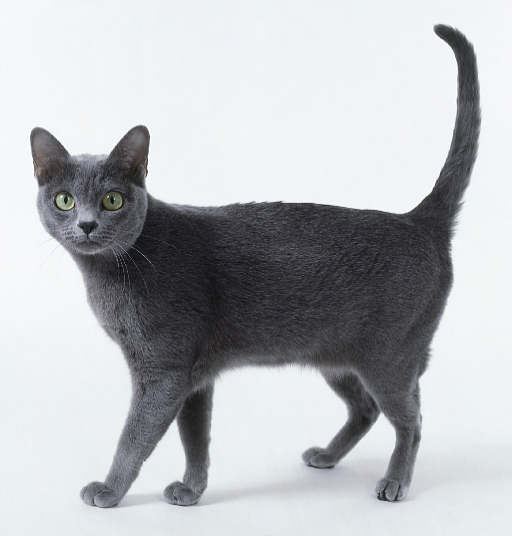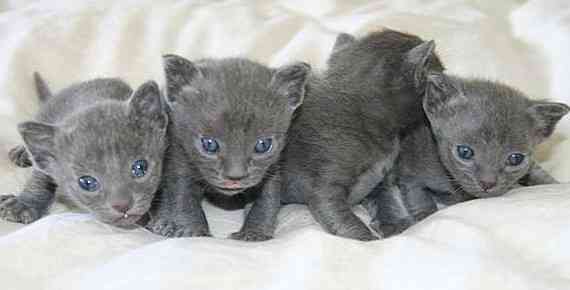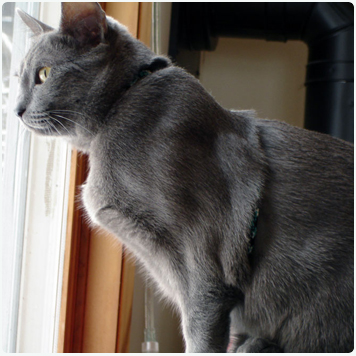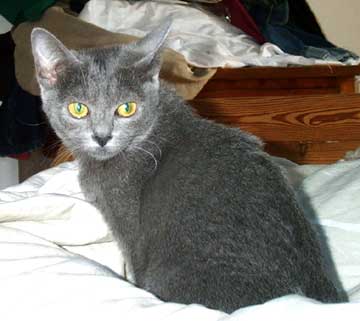



|
Korat Description
The Korat is similar in color to the Russian Blue, though there are distinct differences in coat type. The Korat coat begins in a blue and lightens to silver which gives it the distinctive halo or aura effect. The coat is single, with no undercoat. It is short in length, glossy and fine. The head is a heart shape that gently curves around to the well-developed and strong chin that completes the heart. Ears are large, with rounded tips and a flaring base. They are set high on the head and give an alert expression. The eyes should be large and luminous, possessing an extraordinary depth and brilliance. They should be wide open and oversized for the face and only green. The body is a semi-cobby form, neither compact nor svelte, it is muscular and supple with the feeling of a hard-coiled spring and unexpected weight. The back is carried in a curve. The legs should be in proportion to the body and end in oval paws.
Korat Temperament
The Korat is a gentle animal that dislikes sudden, loud or harsh noises. Despite this, however, they have an appealing disposition. They are very active and good with children. They will not tolerate being in the air. They prefer to keep at least two feet touching a solid surface.
Korat Care
The Korat is very easy to care for and good for people with mild allergies as it does not shed often. People with allergies should be careful, however as this does not eliminate exposure to the enzyme Fel d1, which is responsible for most cat allergies.
Korat History
The Korat is a cat of ancient history. It is mentioned in the Cat-Book Poems of Thailand as one of the 17 good luck cats. It is described as a cat with eyes the color of new rice that shine like dew drops on a lotus leaf and a body the color of rain clouds and silver. Interestingly, however, these are a cat of the people unlike their royal cousins the Siamese. Historically, they have not been sold and are instead given as gifts. They are considered symbols of good fortune, healthy crops and successful marriage and are rare. Jean Johnson is credited with bringing the breed into the West. She and her husband lived in Bangkok for six years where she tried for a great while to purchase a pair of Korats, only to be given a pair by the Thai government when she and her husband returned home. Breeding these with a pair of Siamese she purchased and brought as well, she carefully selected out and continued the process with those kittens that showed the trademarks of the Korat. More of these beautiful cats were obtained in the 1960's, and in 1966 the CFA and ACA recognized the breed. While still rare, they are growing in popularity in the West. In their native land, however, they are hard to find and even harder to obtain.
|